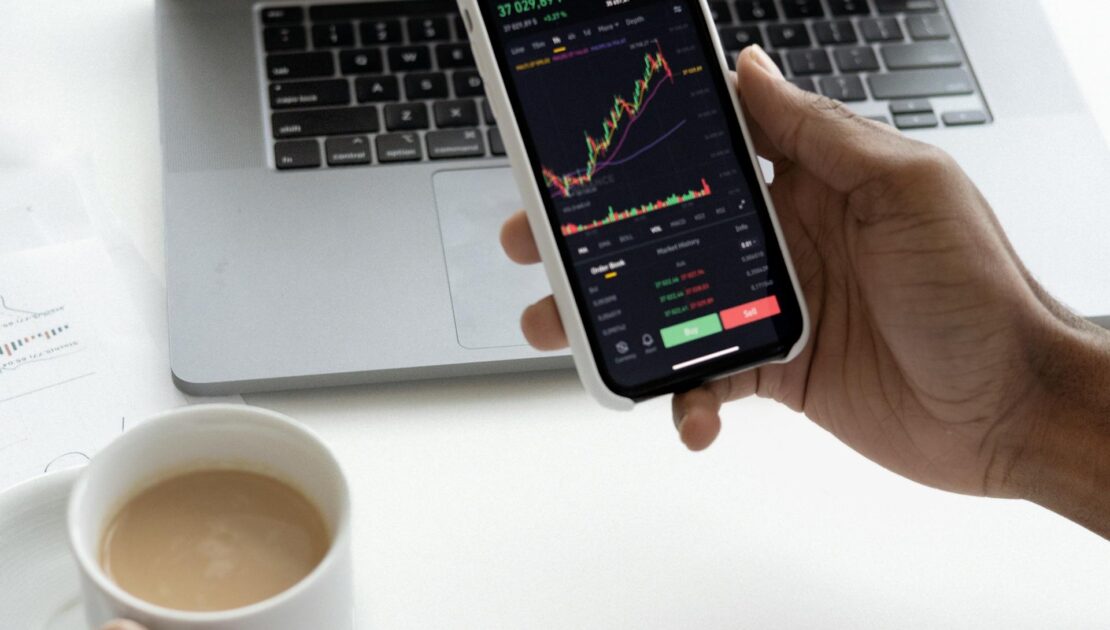
Commodity Trading Signals: How to Use Them for Smarter Investing
- Commodity Trading
- October 21, 2025
- No Comments
- Thaurus
- Commodity trading signals have become an important tool for modern-day investors who want to navigate the dynamic markets with greater confidence. If you are a beginner or learning how trading works, then these signs can offer critical insights regarding when to purchase, hold, or sell stocks. With the use of the right trading platform, investors can easily gain access to real-time alerts, expert analysis, and automated systems that can easily turn raw data into actionable decisions. In this blog, we will study what commodity trading signals are, the types, the benefits, and how you can use them to make smart trading decisions
Types of commodity trading signals
Technical signals
- Technical signals are one of the most widely used forms of trading signals. They are mainly based on chart patterns, mathematical indicators, and historical price data that try to predict future price movements. A technical signal usually indicates a “buy” when gold crosses above its 50-day moving average, which suggests an uptrend. For instance, moving averages, Fibonacci retracements, and RSI (relative strength index).
Sentimental signals
- Sentiment signals evaluate the collective mood of the market participants. Instead, they mainly focus on charts or data that assess how traders are positioned and what they are expecting. Market psychology plays an important role in sentiment signals, and they often move prices in the short term despite fundamentals. Sentiment signals play an important role in recognizing these temporary imbalances.
Hybrid signals
- Some providers also offer hybrid signals that blend major elements of technical, fundamental, algorithmic, and sentiment approaches. The main focus of these signals is on offering a balanced and reliable outlook. A hybrid signal combines various approaches in order to reduce weakness and enhance accuracy.
Fundamental signals
- Fundamental signals are mainly derived from real-world data. The focus of these signals is on supply-demand dynamics as well as economic factors. They are especially significant for commodities that are easily influenced by external conditions.
Algorithmic signals
- With more advancements in technology, many traders mainly depend on algorithmic and AI-produced signals. These systems process wide amounts of data, such as price history, sentiment metrics, and news feeds, faster than any human could.
Advantages of using commodity trading signals
- Commodity signals provide major advantages like decision-making, increased trading accuracy, emotion-free strategies, and the capability to act on real-time market trends. Trading signals uses advanced algorithms and real-time evaluation, which allows traders to spot early opportunities and optimize entries as well as exits in dynamic commodity markets.
Better accuracy
- Signals are based on technical, fundamental, and AI-driven analysis, which helps to recognize precise entry and exit points, easily spotting trends that manual evaluation might miss.
Efficiency
- Some trading signals also combine with automated trading systems, which allows for hands-off execution that saves effort while also sustaining precision.
Objective and emotion-free trading
- By depending on algorithm-produced signals, traders can easily make rational decisions without any emotional bias, which leads to more regular results.
Faster and informed decisions
- Trading signals process insane amounts of data quickly, which helps traders to act quickly on emerging trends and price fluctuations.
Portfolio diversification
- Signals also provide exposure to various commodities, which improves portfolio balance in different economic situations.
How to use commodity trading signals
- Commodity trading signals are used to recognize actionable entry and exit points, manage risk, and optimize effective trading strategies in commodity markets. To effectively employ these signals, investors need to combine real-time data with technical as well as fundamental analysis, which further establishes clear trading plans, and monitor positions accurately.
- You need credible platforms, such as Thaurus, or professional services that offer regular, data-driven signals personalized to commodities of interest. Now each signal is going to specify the commodity, direction (purchase/sell), entry price, stop-loss, and target reviews. You need to review all these components before acting in a trade.
- You will also have to stay updated on news, inventory data, and seasonal trends, which can easily support a trading signal. Use the provided entry price, stop loss, and target exit from the signal, or you can even adapt on the basis of personal risk tolerance and market volatility. Place trades effectively on the basis of signal recommendations, then govern real-time activity, adjust stop loss, and target profit as required by the changing conditions.
- Lastly, set appropriate position sizes, and use stop-loss in order to limit the risk of downside, especially since not all the signals are accurate or even profitable. On a regular period, evaluate how effective trading signals are and adjust filters or even switch providers if the results are not consistent.
Common mistakes traders make with commodity trading signals
Overdependence on signals
- Most of the traders treat commodity trading signals as foolproof plans; they usually ignore wider market factors like news or geopolitical events. Signals should be seen as a tool, and not a trading guarantee; always use them in combination with personal market analysis.
Misinterpreting signals
- Lack of adequate technical knowledge or misunderstanding of the analytical basis of signals may lead to poorly timed trades. Study chart patterns and indicate use to intercept trading signals effectively.
Ignoring market volatility
- Signals do not work in a stable market, as they can produce false triggers during volatile periods. Evaluate market conditions closely before acting, and then adjust position sizes or stop-loss values.
Ignoring risk management
- Not using stop-loss or take-profit orders implies that trader risks major losses if trades do not move in their favor. You need to incorporate sound risk management practices.
Failure to adapt to a trading style
- If you use signals without adjusting them for your personal goals or risk tolerance, then it will lead to negative outcomes. Modify the use of signals in order to suit the trading timeframe and risk appetite.